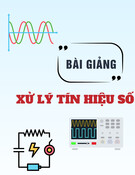
Tuan Hoang Vu, Minh Tuan Nguyen
Abstract – Sentiment Analysis and Opinion Mining
have emerged as highly popular fields for analyzing and
extracting valuable information from textual data sourced
from diverse platforms like Facebook, Twitter, and
Amazon. These techniques hold a crucial role in
empowering businesses to actively enhance their strategies
by gaining comprehensive insights into customers'
feedback regarding their products. The process involves
leveraging computational methods to study individuals’
buying behavior and subsequently mining their opinions
about a company’s business entity, which could manifest
as an event, individual, blog post, or product experience.
This paper focuses on utilizing a dataset obtained from
Amazon, comprising reviews spanning various product
categories such as laptops, cameras and mobile phones.
Following data preprocessing, we employ machine
learning algorithms to classify the reviews as either
positive or negative sentiment. This classification step
enables us to analyze the overall sentiment associated with
the products and draw meaningful conclusions.
Keywords—Customer requirement, electronic
appliances, machine learning, natural language processing,
sentiment analysis.
I. INTRODUCTION
With numerous brands flooding the market, consumers
face the challenging task of choosing the right one. The rise
of e-commerce has significantly influenced consumer
purchasing habits, and they heavily rely on reviews
available on e-commerce platforms, including ratings and
relevant text summaries, to make informed decisions [1].
In addition to e-commerce platforms, product reviews can
also be found on social networking sites [2]. Social
networks have experienced immense popularity in recent
years, leading to a potential exponential growth in data
volume in the future [3, 4]. The continuous influx of user
comments has resulted in a vast amount of online data,
making it challenging to extract relevant information
accurately [5].
Sentiment analysis plays a crucial role in providing
valuable insights to both customers and manufacturers by
analyzing positive and negative sentiments associated with
each product. It is a fundamental task in Natural Language
Processing (NLP) [6, 7]. Sentiment or opinion refers to the
perspective of customers derived from various sources
such as reviews, survey responses, social media, healthcare
media, and more [8]. The objective of sentiment analysis is
to determine the attitude of a speaker, writer, or subject
towards a specific topic or contextual polarity in events,
discussions, forums, interactions, or documents. The
analysis can be conducted at different levels, including
document-level, sentence-level, and aspect-level [9].
At the document-level, sentiment analysis categorizes
the entire document as expressing a positive or negative
view, making it suitable for analyzing a single product
review to determine the opinion about that specific
product. However, it may not be applicable when a
document contains multiple product reviews as it does not
consider different types of reviews. At the sentence-level,
individual sentences are analyzed to determine whether
they convey a positive, negative, or neutral opinion, like
Subjectivity Classification that differentiates between
objective and subjective sentences. The aspect-level
sentiment analysis, also known as feature-level sentiment
analysis, focuses on identifying specific aspects that people
liked or disliked, providing a more detailed analysis of
sentiment. It directly focuses on the opinions themselves
and includes information such as the entity, the specific
aspect of that entity, the opinion regarding the aspect, the
opinion holder, and the timeframe.
With the widespread use of the internet, sentiment
analysis becomes crucial in understanding and extracting
insights from the vast amount of opinionated data available
online. It is widely applied in analyzing product reviews to
understand customer sentiments. By leveraging machine
learning (ML) techniques, sentiment analysis helps
businesses gather customer insights from various online
platforms, including social media, surveys, and e-
commerce website reviews. Furthermore, the popularity of
smartphones has led to a significant increase in individuals
connecting to social networking platforms like Facebook,
Twitter, and Instagram. These platforms have become
spaces where people freely express their beliefs, opinions,
Tuan Hoang Vu*, Minh Tuan Nguyen+
*ThuyLoi University
+Posts and Telecommunications Institute of Technology
MACHINE LEARNING BASED REVIEW
ANALYSIS OF ELECTRONIC
APPLIANCES
Contact author: Minh Tuan Nguyen
Email: nmtuan@ptit.edu.vn
Manuscript received: 7/2023, revised: 8/2023, accepted: 9/2023.
No. 03 (CS.01) 2023
JOURNAL OF SCIENCE AND TECHNOLOGY ON INFORMATION AND COMMUNICATIONS 45





![Tài liệu Đặc tính kỹ thuật dây đồng trần xoắn [C]](https://cdn.tailieu.vn/images/document/thumbnail/2025/20250808/trinhvanmotnt@gmail.com/135x160/21161754899208.jpg)
![Tài liệu Đặc tính kỹ thuật dây nhôm trần lõi thép bọc mỡ [ACKP]](https://cdn.tailieu.vn/images/document/thumbnail/2025/20250808/trinhvanmotnt@gmail.com/135x160/67971754899209.jpg)























